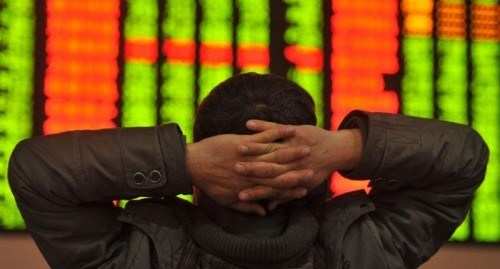The New Equation to Global Market
What we witnessed and are going to see was totally unpredictable 9 months before. Where the world economy is leading to is the question which every analyst is interested in

What we witnessed and are going to see was totally unpredictable 9 months before. Where the world economy is leading to is the question which every analyst is interested in.
While cheap oil is great for consumers, it’s causing chaos in the energy sector. Profits are plunging, jobs are being slashed and dozens of companies are being forced out. The idea that a falling oil price might be a problem seems intuitively wrong. Since the early 1970s there has been a simple equation: sharply rising oil price equals global recession. That held true in 1973-74, 1979-80, 1990 and 2008. Meanwhile, periods when the oil price has been falling – the mid -1980s and the second half of the 1990s- have been associated with booms. There’s a reason for that. When the oil price goes up, producers of crude benefit but save a good chunk of the windfall whereas when the price goes down, consumers gain but they spend rather than bank the proceeds. As such, the fact that a barrel of oil was around $30 a barrel this week as opposed to $115 a barrel in August 2014 should be good news. It means cheaper petrol, smaller energy bills and lower transport costs for business.
But the old equation doesn’t seem to be working this time. Producers of oil are certainly feeling the pinch but global growth is slowing rather than accelerating. Apart from the excess supply, the market fears the weak demand. Support for this thesis comes from stagnant trade growth, a decline in freight movements, and a fall in the Baltic Dry index- an imperfect but much- watched guide to movements of goods by ship- and the steep falls for industrial metals. Copper, iron ore and aluminum prices have crashed, making it harder to argue that the collapse in the oil price is simply a function of a glut of oil.
The primary factor is the crippling economy of China, the biggest oil importer so far. The problem with China’s slowdown is its bad loans, raising debt service cost and massive overcapacity in the property market. Adding to China’s wounds is its aging population, a wide wealth gap, underfunded health and pension systems, environmental degradation and corruption. Growth fell to 6.9% in 2015, the weakest pace since 1990. The analysts believe that the relative tight fiscal and monetary policy propelling the shift from investment economy to household economy will see a 6.5% of growth in terms of GDP in China in the current year. Other growing economies are struggling with refugees’ influx, environmental issues and geo-political tussle but still are better positioned than in previous crises to weather slower growth. The slowdown in oil and gas drilling as it becomes more costly for US oil drillers will account for the whole of the drop in business fixed investment in structures and probably contributed to the slowdown of equipment spending too. Inflation is below target in most advanced countries, and the fear is that it will go lower as a result of the fresh slide in oil prices and willingness of China to use currency depreciation to dump cheap goods on the rest of the world. Plunging oil prices mean lower inflation for longer, with a heightened risk of deflation through the knock-on effect on wages. When oil prices plunge by 10% daily, this is obviously disruptive in the short term, credit spreads in resources and related sectors explode, and leveraged investors are forced into asset fire sales to meet margin calls. This could hurt business confidence and delay the eradication of people’s deflationary mindset. The BOJ adoption of negative interest rates is a measure to forestall such risks from materializing.
With the re-entry of Iranian oil into the market in 2016, supply will continue to surge over demand. Many don’t think the oil market will rebalance until production from the US and other high cost area slows meaningfully, though that could begin to change this year. It is clear that Saudi Arabia isn’t coming to the oil market’s rescue any time soon out of fear production cuts will cause the OPEC leader to lose more ground. The inability of the OPEC cartel to get its act together in a current tense gulf scenario is another big factor.
It seems we have entered the inflection phase of the commodity cycle, in which low prices will trigger a supply correction towards a new equilibrium; there by maneuvering towards a more social, environment friendly and non-profit model. There are lots of reasons to be optimistic about India’s long-term prospects. With China’s economy slowing down, India can fill the void and attract investment which is being pulled not only from China, but also from the emerging markets built to feed it. The commodities bust is good for India in other ways. India uses a lot of energy, and imports a lot of raw materials. India meanwhile will benefit from the opening of Iran-in addition to India’s need for oil, there’s a long history of Persia – India trade relations. So even if India does not fill in for China economically in 2016, it is set to play a more decisive role in geopolitics.
Rukkaiya Pachisa is a Chartered Accountant and currently involved in Financial Management, Business Planning and Analysis and Policy formulation. She is currently the Executive member of Doha Chapter of The Institute of Chartered Accountants of India. She also represents the Committee of Women in Finance and Accounting in Qatar.
To join us on Facebook Click Here and Subscribe to UdaipurTimes Broadcast channels on GoogleNews | Telegram | Signal


